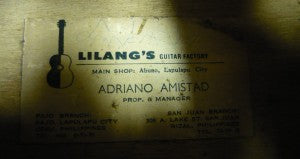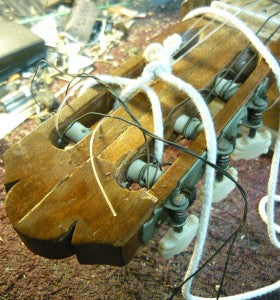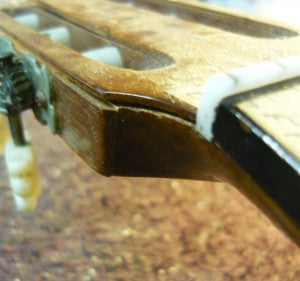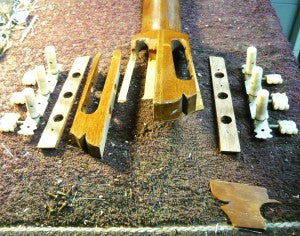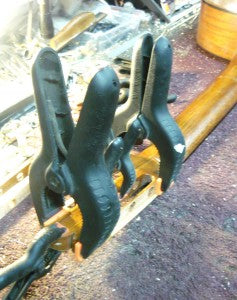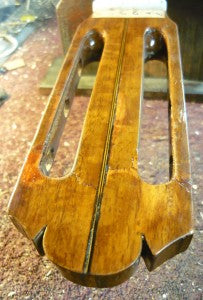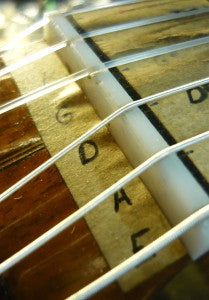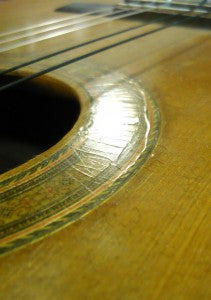Lilang's Acoustic
Share
This was another one of those Amena acoustic type jobs where the guitar really wasn't worth that much but had sentimental value that was priceless. This was owned by my customers husband who had passed away and she played guitar and had been "permenently borrowing" one from a friend who had called in the loan after a few years and she needed something to play. This had been sat in a hard case for years and when she took it out thinking it probably needed a new set of strings, she found this.
The guitar had deteriorated badly over time and it wasn't just a matter of a clean up and new strings. Being a cheap classical from the early sixties it had come to the point where the glue was starting to crystallize and the headstock had taken a knock somewhere along the line causing not only a break in the headstock, but all the wings and laminates to let go completely.
First thing I had to do was take the strings off and get in there and see what was broken, what was missing and how it was all going to fit back together.
As I started to take it apart, more and more of it just fell to pieces.
The neck was made from a cheap Asian "mahogany" but was fairly well made all up. Although being a cheaper end guitar it was well constructed and there was abviously lots of decent hand finish work in the construction.
With the headstock now in pieces it was obvious that even though there was a nasty break, it was all there and fit back together reasonably well. After a dry run with clamps to make sure it was all going back together properly I started the jig saw puzzle in order so that it all went back together.
The sequence was important as certain parts fit in or under other parts that seemed to go sooner but would have made it impossible to assemble otherwise. I decided on using epoxy to glue it all back together as I needed good strength and stability and had good surface area with no real need for grain penetration.


After several days of gluing, clamping, drying, more gluing, more clamping ......... It was all back together and looked, well, pretty good. Once it was all cleaned up and checked over, I just needed to sand it lightly and redrill the tuner holes that were partly filled with epoxy.
Once this was done a couple of light coats of lacquer sealed any bare places and once dry, I "reliced" it slightly to take the shine off and make it not stand out like a sore thumb


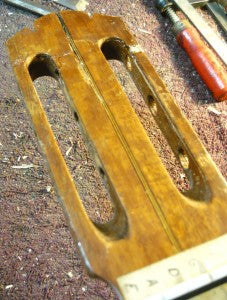

With the headstock done and the tuners back on it was time to string it up and see how it played, well, so I thought. As I went over the body to check for loose or seperated glue joints one of the top braces just "fell off" !! I checked others and there were some loose ones that would need my attention. I injected glue into these and clamped them and once they were all sorted I reglued the one that had come off completely. These were all repaired with white glue which I prefer to use for brace repairs.
Now it was time to string it up and see how it played and well, it's actually pretty nice. It plays well and intonates pretty accurately which is always nice on a cheap nylon string. I didn't do much work on the bridge or nut as they we're "OK" and I didn't want to do too much more work that might send the cost too high and it was playing fine.
As a guitar it's probably worth as much as the repair cost but that's not really the point. The guitar is worth a lot more to the owner as a piece of family history and what it means to her. These jobs aren't worth it financially but they are for warm fuzzy feelings and because, well, they're fun.

